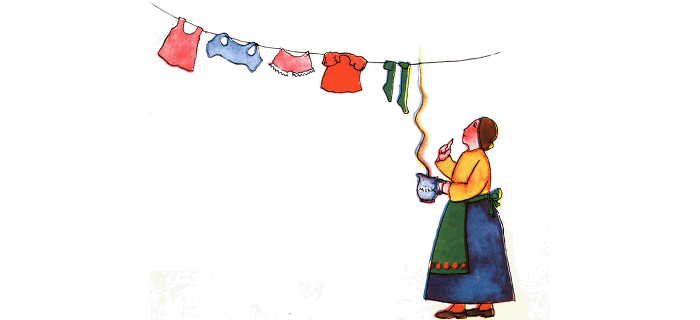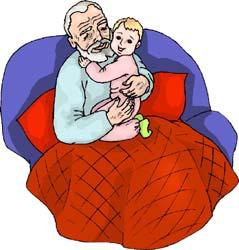Hospice

Hospice (from the linguistic root of "hospitality") originally meant a shelter or place of rest for weary or sick travelers on long journeys. Hospice supports patients by helping them manage symptoms and live their final days with dignity at home, or in a home-like setting. Approximately 90 percent of patient time is spent in personal residences, while some patients are cared for in nursing homes or hospice centers.

History reveals that the tenets of present-day hospice were followed in a variety of care programs as far back as the 12th century A.D. The Sisters of Charity, an order of nuns, was established in France in the 1600s, and in the 18th century, Kaiserwerth, a hospital dedicated to aiding the sick and dying, was founded by Prussian Baron von Stein.
English Quaker Elizabeth Fry visited Kaiserwerth in 1840 and was inspired to begin prison and hospital reform. Florence Nightingale, a contemporary of Fry, raised the level of respect for the nursing profession through her work and training of caregivers. Sister Mary Aikenhead, coworker of Nightingale, founded a hospital for the terminally ill in Dublin in the late 19th century. St. Joseph's Hospice began in London in 1906, and in 1967, Dr. Cicely Saunders established St. Christopher's Hospice near London.
Hospice was established in the United States in 1974 when a group from Yale University visited St. Christopher's and was inspired by what they heard and saw. They returned to begin hospice care for patients in New Haven, CT. The beginning of the modern hospice movement began in 1980, with the establishment of Connecticut Hospice, Inc.
In the United States, there are presently nearly 3,000 programs in all states, the District of Columbia and Puerto Rico. It is estimated that hospice programs serve over 340,000 patients and their families each year.
Referrals to hospice are made by the primary physician, but also can be suggested by families, friends, clergy or other health professionals. The decision to choose hospice, by law, is the patient's. The hospice patient usually has a life expectancy of six months or less.
Care is provided by an interdisciplinary team which includes physicians, nurses, home health/hospice aids, social workers, chaplains, therapists, dietary counselors and trained volunteers. The team addresses the medical, emotional, psychological and spiritual needs of the patient, treating the person, not the disease, and emphasizes quality, rather than length of life. The family, which is included in the process, is also provided with bereavement counseling after the loved one is gone.
Volunteers make up nearly 80 percent of the hospice workers in the United States. Each year more than five million hours are spent by hospice volunteers practicing selflessness--giving back rubs and foot massages, cooking special meals, playing games, performing household chores or just listening.
Many of these volunteers give of themselves after a personal or family experience with hospice. Others want to share the kindness they received when dealing with the death of someone close, who may or may not have been under hospice care. Without these volunteers, many of the personal services provided through hospice would not be possible. Volunteers are trained rigorously to care for patients and to assist and comfort those close to the patient. In addition to helping patients live their last days to the fullest, volunteers may assist with financial and other personal matters that arise during and after the final stages of illness.
Making a Bad Time a Little Easier
Sherry's father recently died of pancreatic cancer. She told me, "We didn't bring hospice in until the last month, but I wish we had done it sooner. They came twice a week and checked on him, even noticed a medical condition that required minor surgery. No, it didn't make him live longer, but it made him more comfortable. That's what they do, make the patient more comfortable. And the family too. They helped us to understand the dying process, and they were there on that last day, and even at his funeral. They were wonderful and made the worst time of my life a little easier."
Because family, friends and volunteers provide much of the home care to the patient, hospice is usually less expensive than conventional care. The Medicare Hospice Certification Program was passed in 1983 recognizing hospice care as a reimbursable service. In most states it is also a covered Medicaid benefit. Medicare covers physician services, nursing care, appliances and supplies, drugs for symptom management and pain relief, short- term inpatient care including respite care, home health aide and homemaker services, physical therapy, occupational therapy, speech/language pathology services, medical social services and counseling, including dietary and spiritual counseling. Hospice care is also covered under most medical insurance programs. Since hospice is also supported by communities, volunteers and grants, services can be provided upon need rather than on ability to pay.
Most hospitals and healthcare organizations offer hospice. For information as to programs available throughout the country, contact The National Hospice Organization (NHO). Their office is located at 1901 N. Moore Street, Suite 901, Arlington, VA 22209, and the NHO Hospice Helpline number is 1-800-658- 8898.
- I have the right to be treated as a living human being until I die.
- I have the right to maintain a sense of hopefulness, however changing its focus may be.
- I have the right to be cared for by those who can maintain asense of hopefulness, however changing this might be.
- I have the right to express my feelings and emotions about my approaching death, in my own way.
- I have the right to participate in decisions concerning my case.
- I have the right to expect continuing medical and nursingattention, even though "cure" goals must be changed to "comfort" goals.
- I have the right not to die alone.
- I have the right to be free from pain.
- I have the right to have my questions answered honestly.
- I have the right not to be deceived.
- I have the right to have help from and for my family in accepting my death.
- I have the right to die in peace and dignity.
- I have the right to retain my individuality and not be judged for my decisions, which may be contrary to the beliefs of others.
- I have the right to discuss and enlarge my religious and/or spiritual experiences, regardless of what they may mean to others.
- I have the right to expect that the sanctity of the human body will be respected after death.
- I have the right to be cared for by caring, sensitive, knowledgeable people who will attempt to understand my needs and will be able to gain some satisfaction in helping me face my death.
("The Dying Person's Bill of Rights" was created at a workshop on "The Terminally Ill Patient and the Helping Person," sponsored by Southwestern Michigan Inservice Education Council, and appeared in the American Journal of Nursing, Vol. 75, January, 1975, p. 99.)
Sheila Velazquez is an award-winning, self-syndicated newspaper columnist and freelance writer, mother of four and grandmother of five. Her articles also appear in parenting and women's magazines. Sheila posts columns at her modest website.
